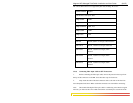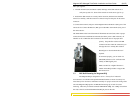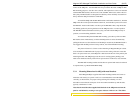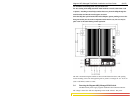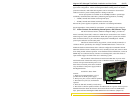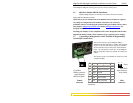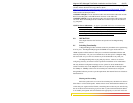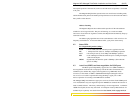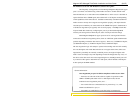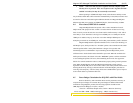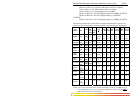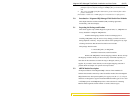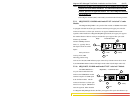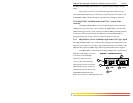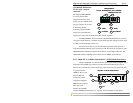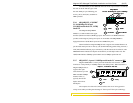
Magnum 6KQ Managed Field Switch Installation and User Guide (04/07)
32
www GarrettCom com
..
this manual to access the “6K-MNS(Rel 3) Software user guide”
One frequently-used application for the Managed Magnum 6KQ Switch copper
ports is to connect one of them using a fiber media converter to another Switch in the
network backbone, or to some other remote 100Mb device. In this case, it is desirable to
operate the fiber link at 100Mb speed, and at either half- or full duplex mode depending
on the capabilities of the remote device. Standard commercially available Fast Ethernet
media converters mostly do not support auto-negotiation properly, and require that the
switched port to which they are connected be at the 100Mb fixed speed. Attachments to
a 10/100 auto-negotiation port typically will not work properly. The 6KQ Switch’s RJ-
45 ports handle this situation by configuring the ports as per desired through MNS
software port settings and can check the port status of each port after the change.
When Magnum 6KQ RJ-45 copper ports are set for auto-negotiation and are
connected to another auto-negotiating device, there are 4 different speed and F/H modes
possible depending on what the other device supports. These are: (1) 100Mb full-duplex,
(2) 100Mb half-duplex, (3) 10 Mb full-duplex and (4) 10 Mb half-duplex.
The auto-negotiation logic will attempt to operate in descending order and will normally
arrive at the highest order mode that both devices can support at that time. (Since auto-
negotiation is potentially an externally controlled process, the original “highest order
mode” result can change at any time depending on network changes that may occur). If
the device at the other end is not an auto-negotiating device, the 6KQ’s RJ-45 ports will
try to detect its idle signal to determine 10 or 100 speed, and will default to half-duplex
at that speed per the IEEE standard.
General information -
Auto-negotiation per-port for 802.3u-compliant switches occurs when:
-- the devices at both ends of the cable are capable of operation at either
10Mb or 100Mb speed and/or in full- or half-duplex mode, and can
send/receive auto-negotiation pulses, and . . .
-- the second of the two connected devices is powered up*, i.e., when
LINK is established for a port, or
-- the LINK is re-established on a port after being lost temporarily.



